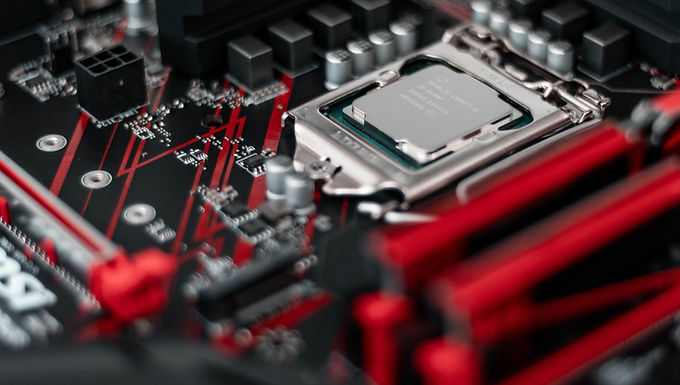Business Value
The Value of Integrated Content Delivery Appliances
This insight details the key benefits of integrated hardware / software solutions, highlighting the value it provides for content delivery applications.

The Value of Integrated Content Delivery Appliances
From smartphones to medical devices to automobiles, the most reliable and elegant solutions are noted for their integrated approach to hardware and software design.
These unified development frameworks consistently outperform their competition, differentiating themselves across a wide range of attributes. They include:
Key Attributes of Integrated Hardware/Software Appliances
1. Improved Stability and Compatibility: Having both hardware and software elements designed to work together from the outset, issues related to compatibility, driver conflicts, and unpredictable bugs are reduced, resulting in more stable systems.
2. Seamless User Experience: Users experience faster setup, simpler workflows, more consistent interfaces because the entire stack is designed with a common vision. This includes easier login procedures and more intuitive device interactions.
3. Performance Optimization: When software is tightly integrated with hardware, it helps maximize processing speeds, reliability, and efficiency. This leads to faster operation, lower latency, and higher overall system performance.
4. Enhanced Security: Unified development enables robust, centralized security policies, faster patch deployment, and simplified compliance with industry standards—especially important for sensitive environments like healthcare or finance.
5. Cost Savings: Engineering hardware and software together often reduces redundant components and allows the company to optimize system resources for the specific use case, lowering manufacturing and operational costs.
6. Power Efficiency: Integrated design supports sophisticated power management, letting software dynamically control hardware usage to optimize energy consumption - crucial for battery-powered devices and data centers.
7. Rapid Feature Delivery and Longevity: Updating and adding new features is easier and faster, as the company can roll out coordinated software updates that fully leverage hardware capabilities, often extending the lifecycle of the device without hardware changes.
8. Streamlined Support and Maintenance: Users benefit from a single point of contact for troubleshooting, updates, and support, since the company controls both hardware and software elements, leading to faster issue resolution and coordinated updates.
9. Scalability and Futureproofing: Such solutions are easier to scale and adapt to new technologies (like AI or IoT) and can more readily integrate new features and hardware revisions over time.
These benefits are why devices like smartphones, game consoles, and advanced IoT systems often rely on this unified development approach.
Integrated Content Delivery Appliances
Integrated content delivery appliances are expected to consistently deliver reliability, performance, and operational efficiency regardless of the application.
In the Digital Cinema industry, theatre appliances are called on to reliably cache several terabytes of data each week in an error-free environment.
For Defense and Intelligence, streamed data and video content needs to be instantly processed for viewing, analysis, and caching. The performance of the appliance is critical for these situational awareness applications.
For scores of other applications, across the consumer and enterprise spectrum, the enhanced capabilities of a purpose-built, integrated appliance are paramount.
Integrated Content Delivery Appliances deliver essential value to both the end user and the service provider, each measuring value differently.
The Value of Integrated Content Delivery Appliances for End Users
End users realize the value of high-quality appliances in their reliability and performance. This drives superior user satisfaction.
Reliability and optimized performance are the result more stable internal operation within these units.
These attributes further allow end users to realize value through increased scalability, more reliable performance and feature enhancements, reduced downtime, faster issue resolution, and intuitive user interaction.
All these items help drive a lower Total Cost of Ownership (TCO). This lower TCO further manifests itself through lower power consumption, lower support costs, and a longer product lifecycle.
The Value of Integrated Content Delivery Appliances for Service Providers
Service Providers measure the value of integrated appliance in terms of performance, lower operating costs, and higher profitability.
Lower help desk and support costs are driven by the stability of these systems. Beyond lowering operating expense, this helps drive user satisfaction, resulting in additional profitability through extended customer engagements.
The stability of Integrated Content Delivery Appliances also results in a longer use life for the appliances and an ability to better scale. This allows the technology to remain in service as customer networks grow.
The ability of these appliances to more-rapidly develop and deliver patch deployments is a critical benefit, reducing the manpower required for issue resolution and simplifying security compliance efforts.
Collectively, these benefits result in increased revenue and higher gross margins for the service provider. This is heightened by lower equipment costs, the reduced need for spares pool investment, and the future proofing of hardware through software-driven upgrades.
Intergrated Content Delivery Appliances offer compelling value that is difficult to ignore. At KenCast, we have decades of experience in successfully developing and deploying these appliances for enterprises and service providers for critical networks across the industries we serve.

